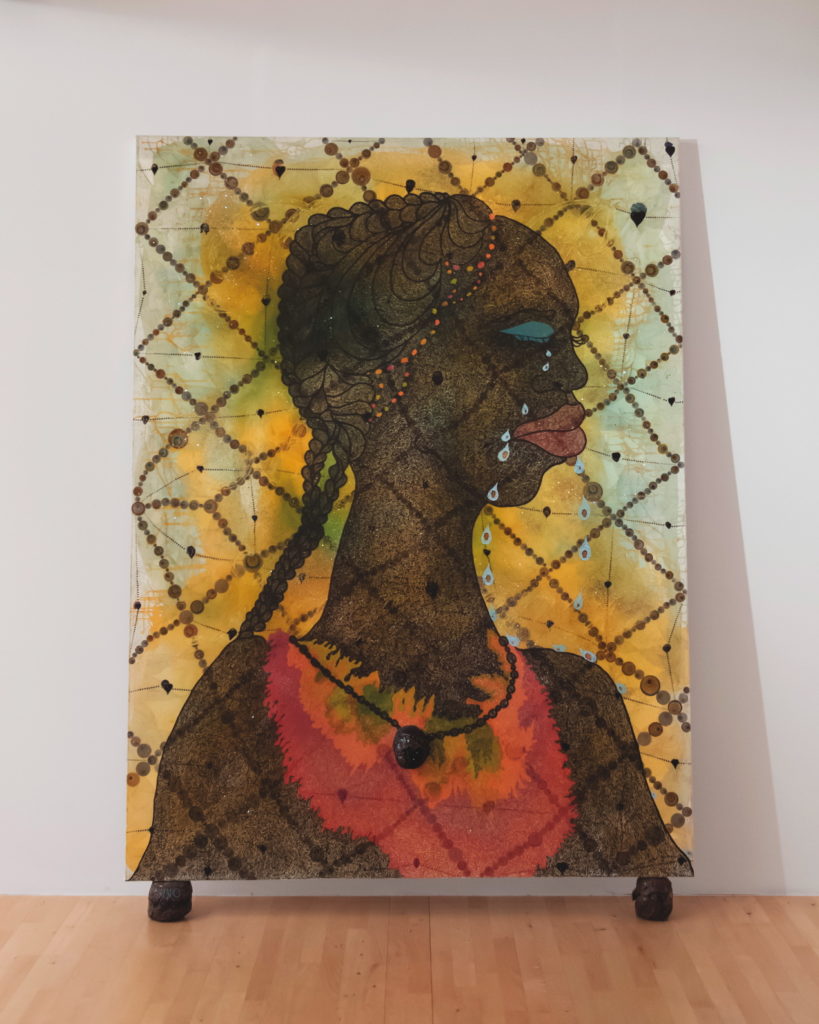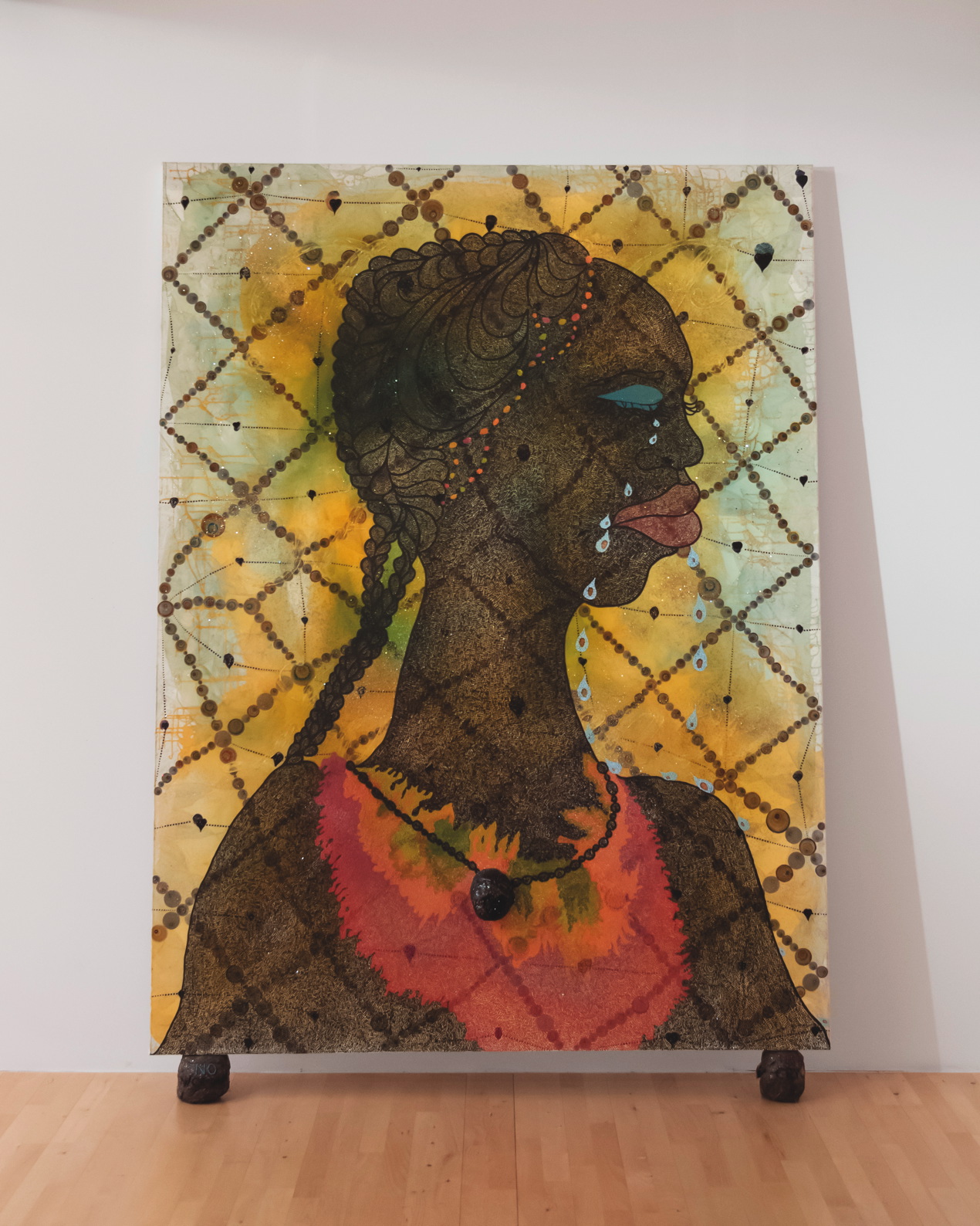In the frame:
No Woman, No Cry
by Chris Ofili
Tom Emery, Tate Liverpool’s content editor, on the sad endurance of the Turner Prize-winning painting
In 1998 Chris Ofili won the Turner Prize – the first black artist to do so – with his painting No Woman, No Cry helping to secure him the award. Now, Ofili is held up as one of the UK’s greatest living artists and this work is a highlight of the displays at Tate Liverpool.
But in the 1990s his work was seen as controversial, partly due to his use of elephant dung in his paintings. The Turner Prize has often courted controversy in the press and Ofili was particularly singled out. An October 1998 headline in The Times read: “Great works of art or just a pile of dung?”
Ofili’s work would stir up even more trouble in the US in 1999, when his painting The Holy Virgin Mary (1996) was part of an exhibition of British art on display at the Brooklyn Museum. Again, Ofili had used elephant dung among his materials, alongside images cut from pornographic magazines in his depiction of the Virgin Mary. The then mayor of New York, Rudy Giuliani, was outraged by the painting and threatened to withdraw the museum’s funding. The museum resisted Giuliani, successfully taking him to court for impeding freedom of speech.
The outrage and snobbery that Ofili has faced has often served to distract from the striking beauty of his work. No Woman, No Cry is one of his most important paintings, as it pays tribute to Doreen Lawrence, the mother of murdered teenager Stephen Lawrence. In 1993, Stephen Lawrence was killed in a racist attack, but it would take years of campaigning from the Lawrence family to get justice for their son. In 1999, an inquiry found that the initial investigation had been harmed by incompetence and racism within the police.

Although not a direct portrait of Doreen Lawrence, the central figure is inspired by her. Each of her tears features a photo of Stephen Lawrence at its centre. Very faintly, the words “RIP Stephen Lawrence 1974–1993” appear across the surface of the work, written in glow in the dark paint. Ofili uses his notorious elephant dung to make a pendant for the woman’s necklace. Two further balls of elephant dung are used to prop up the painting when it goes on display. This unusual material presents a challenge for Tate’s conservators. Each ball is dried, then sealed in resin, but it isn’t known how long they will remain in good condition. If they ever need to be replaced, Ofili has left instructions that Tate should contact London Zoo.
Describing the work, Ofili has said that “the image that stuck in my mind was not just his mother but sorrow – deep sorrow for someone who will never come back”. This allows the painting to be read as a universal depiction of grief, something anyone can relate to, as we will all experience it at some point in our lives. But the current Black Lives Matter campaign gives Ofili’s work a tragic relevance, as people around the world, including in the UK and the US, protest against systemic racism. While Stephen Lawrence’s murder ultimately led to significant reform of the UK justice system, and Black Lives Matter is instigating a positive change, these events are nonetheless rooted in the deaths of black people – people who are mourned by their families and friends, and who will never be able to benefit from the changes their deaths may bring about. More than two decades since its creation the importance of No Woman, No Cry remains.

Leave a reply
Your email address will not be published.